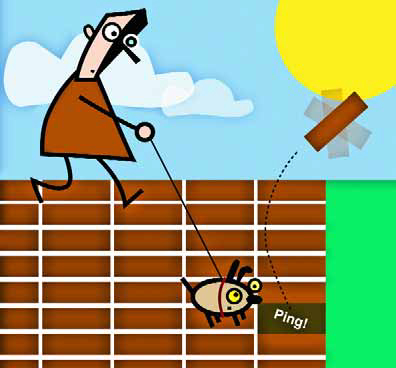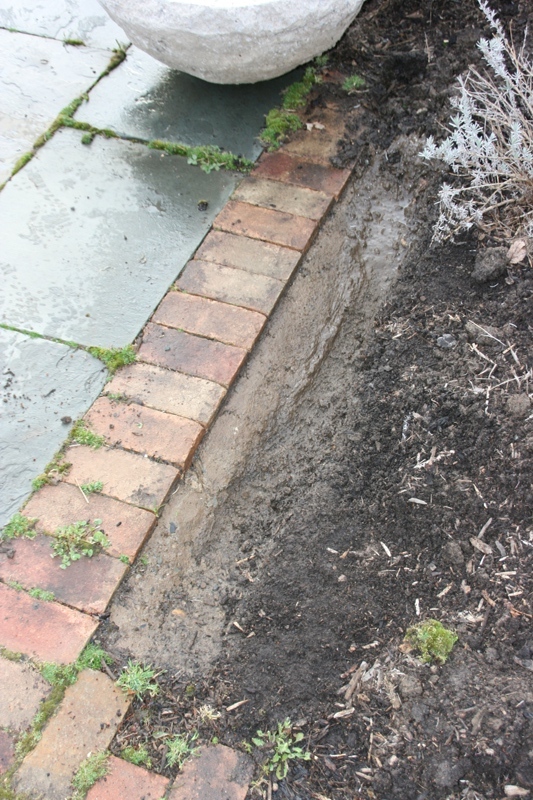Sturdy at the Edges

In just about every profession, it seems that there’s one thing or another that goes unnoticed and underappreciated because it is overshadowed by more visible or sensational elements. In the watershaping and landshape trades, for example, I see foundations as being among these unsung details despite their obvious significance.
They’re so important that I always talk with my clients about them and the role proper preparation plays in the success of everything atop them. After all, I say, a home can have wonderful tile work in the kitchen, but it really won’t be worth much unless the home itself has a good, solid foundation.
Likewise in the landscape: If we’re working on a deck, I know my clients will be more impressed by a great railing detail than they ever will by the unseen and invaluable substructure upon which it stands. And the same holds true for the underpinnings of barbecues or planting areas or irrigation systems – or for the item I’ll address here, which has to do with the edge restraints for dry-laid paving.
That’s not a sexy subject, as I think you and most of my clients would agree, but as I explain to anyone who will listen, the improper use (or absence) of edge restraints cuts a clear path to project failure.
To be sure, most contractors and even many designers know about the value of setting a good base for paving materials including bricks, concrete pavers and smaller paving stones: If you don’t prepare a proper base, the paving material will settle, usually unevenly. Fewer, it seems, are aware of the importance of properly retaining the edges of these structures – perhaps because they simply don’t see them as “structures” in the usual sense.
STEPPING DOWN
In my work, by contrast, I always see paved areas as structures requiring appropriate foundations. I do so because all areas that are walked upon or driven over are subject to downward forces and a proper base is required to prevent the paving materials from settling.
Especially in cases where there will be vehicular traffic, these areas are subject not only to this vertical pressure, but also to lateral movement. Indeed, cars, truck or heavy equipment moving over a brick driveway exert tremendous lateral pressure, especially when the tires are steered. If the paving is not adequately contained, the materials will want to slip sideways. This results in the opening of gaps in the surface and ultimately leads to paving-system failure.
I never want that to happen, so I always restrain paving edges and do all I can to prevent lateral movement.
What’s a good foundation in these cases? In my business, we extend the base for the paving materials out well beyond the final, formal edge of the paving. Where we work, we use crusher run (a basic mix of #2 stone and stone dust) for this purpose, extending it out beyond the planned edge of the paving to an extent equal to the base’s depth. Thus, if we provide a seven-inch excavation to prepare for installation of a pedestrian walkway, we extend the base out seven inches beyond the line established for the edge of the paving.
As I see it, the last thing we want to have happen is for pavers to start sloughing off the edges. So here in upstate New York, if we’re planning on a car-accessible paving for a residential driveway, we’ll excavate to 12 inches or more, depending on the soil conditions, then extend the base out to match this depth. This extension gives us a uniformly compacted sub-base on which we can place our edge restraint.
There are lots of options in edge restraints. I recently read an article (in another trade magazine, just so you know) in which the writer strongly advocated use of the plastic edge restraints available on the market and came down especially in favor of the one his company makes. These edgings are designed to be spiked down into the ground alongside the pavers they are charged with holding back.
These plastic products come in several configurations, but for the most part they have triangular cross-sections and serve to buttress paving materials in place once they are spiked into a substrate of base stone that’s supposed to be there (per the discussion above). With precise installation of these products, they can also be used as a screed for the bedding course of sand.
It’s not my intention to knock these products. Quite the contrary, because they can and do work well under the right conditions – but not so well, unfortunately, in the conditions we encounter in climates that get as persistently cold and damp as is the case in upstate New York. Here, for example, we can experience stretches during winter in which the temperatures will range from zero to 60 degrees in a short period of time – a level of fluctuation that can destroy any ill-founded paving scheme in no time at all.
TEMPERATURE DIFFERENTIALS
Winters here are notorious for the havoc they wreak on all phases and types of construction, and it’s not so much about the consistent, bitter cold making work uncomfortable as it is about the repeated cycling between cold and warm and the freezing and thawing that result.
As the ground freezes, it expands to an extent that depends on the amount of moisture it contains. These moisture levels aren’t consistent from place to place, so the ground will not expand (or heave) in a uniform manner. Then comes a thaw, and the ground (and everything on top of it) settles back down, again to different extents. The edge-restraint system is supposed to settle back down into place as well, but in my experience this is often not what happens.
The issue is simple: Edge restraints heave in a different way and to a different extent than do the heavier bricks they’re meant to hold in place. That difference is critical, because weight is the main reason why brick, paver or stone walkways, patios and driveways return to their previous planes when the winter ends. (This is why so many lawns are rolled in spring hereabouts: The grass gets bumpy from inconsistent frost heave and does not return to anything approaching a level field.)
This issue might not affect a plastic edge-restraint system in the first year or two, but after a few years, the top of the edging will begin to show in places as it rises further and further and settles less and less. Moreover, with lighter-weight plastics, even the movement of the grass or soil alongside it can hold it up – at which point the intrusion of a pebble or a bit of soil falling below the edging is enough to prevent it from finding its way back down.
In most such cases, using a hammer to pound down the spikes only succeeds in slamming the spike right through the edging!
Manufacturers found a way to solve this problem by putting an extension of the restraint’s bottom as a lip extending below the paving. Their reasoning: The weight of the paving material will push the edging back down. But leverage is a factor here, with the long lengths of the edging pitted against the weight of the bricks. So rather than the brick pushing the edging down, the edging actually holds the brick up!
Please: There’s no need to send me letters if you live in places where there’s no frost heave and your plastic edge-restraint systems are perfectly adequate: All I know is that I have tried or encountered just about every plastic system in the 20 years or so they’ve been available, and they just don’t meet the climatic challenge where I work. As a result, it’s my judgment that the best way to restrain paving in northern climates is through proper use of concrete.
HARDSCAPE SOLUTION
With concrete, all you do is prepare a proper base, as described above. Once all of the bricks or pavers have been placed and all necessary cuts have been made, we carefully scrape away the extended bedding sand by sliding a trowel straight down alongside the paving material to the base stone.
We then trowel concrete along the resulting edge, striking it in a triangular pattern not unlike the one you see in most plastic edging so it ends up about an inch below the top of the brick, sloping back about four or five inches from the edge. In nearly 30 years of installing bricks and pavers both on Long Island (milder but still cold) and in upstate New York, I’ve never had an edge failure.
| At least where I work and the winters get truly nasty, plastic edgings just don’t have what it takes to hold bricks or pavers in place for the long haul (A). As an alternative, we hem our bricks and pavers in with concrete (B): The concrete bonds to the edge of the surfacing material and forms a substantial monolithic mass that holds things in place. |
The reason for this track record is that the concrete tends to bond to the edge of the bricks or pavers while creating what is in effect a monolithic pour along the length of the paved area. This concrete will crack perpendicular to its length, but that won’t affect its basic integrity as the weight of concrete and the force of the soil alongside it will tend to keep it in place.
(I’ve never needed to embed rebar in the concrete and haven’t seen a reason to do so – and my projects have worked fine without it. I’m sure that there are cases where use of steel-reinforced concrete would be advisable – if, say, a driveway were to be regularly traversed by fire engines or other large, heavy vehicles – but for most residential applications the use of steel is probably overkill.
There are, of course, alternatives to plastic and concrete. Indeed, steel edgings have been used for years with good results and, unlike plastics, can be hammered back down into position quite effectively if they move. The same goes for aluminum edgings, although I’ve noticed that some aren’t quite strong enough to withstand lateral pressure for the long haul.
As always, your choices will be dictated to a large extent by the conditions you encounter. In my case, concrete is king – and I’ll persist in extolling its virtues!
Bruce Zaretsky is president of Zaretsky and Associates, a landscape design/construction/consultation company in Rochester, N.Y. Nationally recognized for creative and inspiring residential landscapes, he also works with healthcare facilities, nursing homes and local municipalities in conceiving and installing healing and meditation gardens. You can reach him at [email protected].











